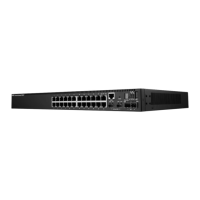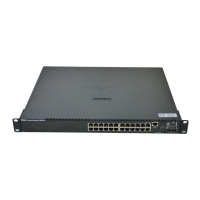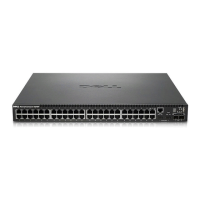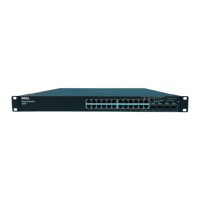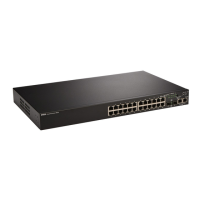24 Introduction
www.dell.com | support.dell.com
LAG is composed of ports with the same speed, set to full-duplex operation.
For more information, see "Defining LAG Membership".
Link Aggregation and LACP
LACP uses peer exchanges across links to determine, on an ongoing basis, the aggregation
capability of various links, and continuously provides the maximum level of aggregation capability
achievable between a given pair of systems. LACP automatically determines, configures, binds and
monitors the port binding to aggregators within the system.
For more information, see "Defining LACP Parameters".
Layer 3 Features
Address Resolution Protocol (ARP)
ARP is a TCP/IP protocol that converts IP addresses into physical addresses. ARP automatically
determines Device Next-Hop MAC addresses of systems, including directly attached end systems.
Users can override and supplement this by defining additional ARP Table entries.
For more information, see "Mapping Domain Host".
TCP
Transport Control Protocol (TCP) connections are defined between 2 ports by an initial
synchronization exchange. TCP ports are identified by an IP address and a 16-bit port number.
Octets streams are divided into TCP packets, each carrying a sequence number.
BootP and DHCP Clients
Dynamic Host Configuration Protocol (DHCP) enables additional setup parameters to be received
from a network server upon system startup. DHCP service is an on-going process. DHCP is an
extension to BootP.
For more information on DHCP, see "Defining DHCP IP Interface Parameters".
Quality of Service Features
Class Of Service 802.1p Support
The IEEE 802.1p signaling technique is an OSI Layer 2 standard for marking and prioritizing
network traffic at the data link/MAC sub-layer. 802.1p traffic is classified and sent to the
destination. No bandwidth reservations or limits are established or enforced. 802.1p is a spin-off of
the 802.1Q (VLANs) standard. 802.1p establishes eight levels of priority, similar to the IP
Precedence IP Header bit-field.
For more information, see "Configuring Quality of Service".
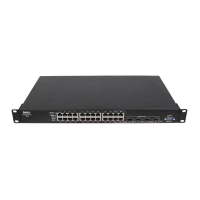
